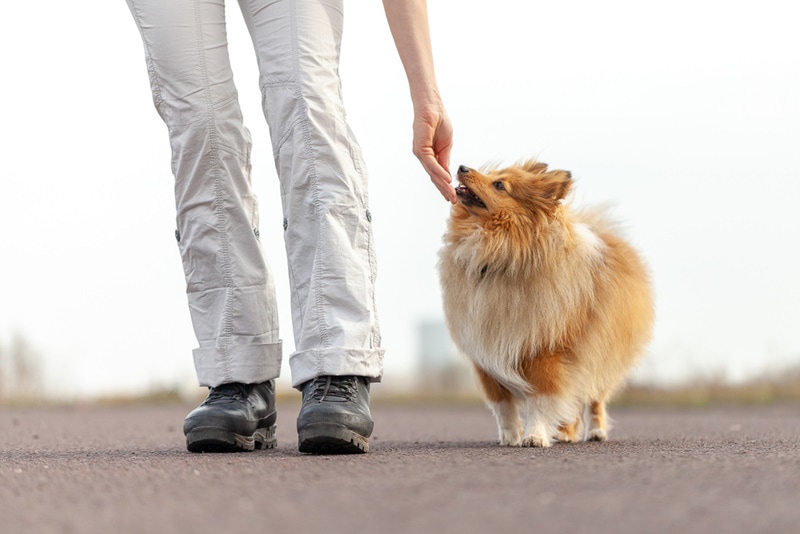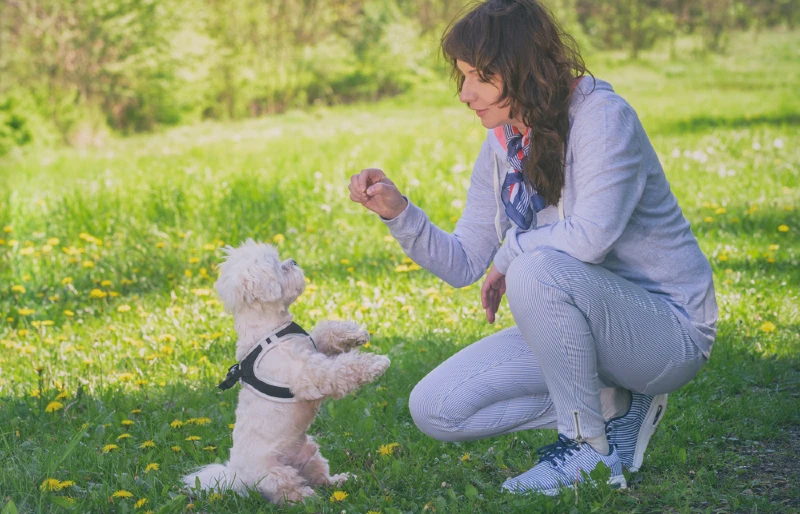International Assistance Dog Week 2024: When It Is & How it’s Celebrated
Updated on

There can surely be nothing nobler than an assistance dog. An obliging creature that humbly avails itself to another species without hesitation. Humans are certainly very blessed to have these incredible hounds in our lives. And let’s not forget the amazing humans that have dedicated their lives to training these special dogs for the benefit of people in need.
It is fitting that we have an entire week of the year dedicated to the celebration of assistance dogs and the wonderful organizations that make them so. International Assistance Dog Week (IADW) begins on the first Sunday of August every year (August 6th, 2023).
What is International Assistance Dog Week?
IADW is an organization created specifically to recognize the devotion and hard work of wonderful assistance dogs.1 They help humans with disabilities live fuller, enabled lives.
- “Recognize and honor assistance dogs
- Raise awareness and educate the public about assistance dogs
- Honor puppy raisers and trainers
- Recognize heroic deeds performed by assistance dogs in our communities”

How Did International Assistance Dog Week Start?
IADW was founded in 2009 by Marcie Davis, herself a paraplegic and the author of “Working Like Dogs: The Service Dog Guidebook”. As a member of the service dog team of passionate and dedicated individuals, she established IADW for two main reasons. Firstly, as means of raising awareness for the movement, and secondly, to honor assistance dogs around the world as well as their handlers and trainers.
The organization provides substantial information via their website on how to stage your own event to support the cause.
What Is an Assistance Dog?
Assistance dogs perform a multitude of specialized tasks. As their name suggests these tasks assist humans in various areas of society.
They fall into two more broad categories—namely service dogs and therapy/facility dogs.
Service dogs are trained to work as a team with their handler, a person with a (physical) disability, to ease their disability. According to the Alliance of Therapy Dogs,2 they “help them attain safety and independence.”
Therapy dogs also undergo very specialized training. Their job is to provide psychological or physiological support to others who are not their handlers. A therapy dog will travel around visiting a huge variety of facilities, such as hospitals, schools, hospices, nursing homes, rehabilitation centres, and more. They will work with a vast number of people under the guidance of their handler.
A facility dog performs the same function as a therapy dog. However, it is based at a single facility where it works all day long under the care of its handler.

What Breed of Dog is Best Suited to Being an Assistance Dog?
No breed of dog is barred from being an assistance dog according to the ADA (Americans with Disabilities Act).
While any dog can potentially become an assistance dog, certain breeds are favored as service dogs. You are very likely to see Golden Retrievers, Labradors, Collies, German Shepards, Cocker Spaniels and Saint Bernards as service dogs, to name a few.
In theory, and often in practice, any dog from a Chihuahua to a Cane Corso could be an assistance dog.
The 5 Important Facts to Know About Service Dogs
1. Service Dogs Are Not Pets
Service dogs are doing a job—a very important one, at that. Most service dogs are not allowed to be petted when they are on duty, particularly by strangers.
2. A Service Dog Is Highly Trained
A service dog is trained to understand and perform anywhere between 50 and 60 commands and tasks. They can push elevator buttons, fetch medicine from the refrigerator, and understand a doorbell or alarm clock.

3. A Service Dog Is Allowed to Go Anywhere That a Normal Person Is
By law, service dogs on duty may not be barred access from any public place that a person would normally go.
4. Service Dogs Are Trained to Behave a Certain Way in Public
Service dogs are trained to behave exceptionally well in public. They are especially considerate of their handler. They will not bark unnecessarily or become distracted by anything going on around them. They almost blend into the background in a way that it’s easy to forget they’re there—a true canine saint.

5. Never Approach a Service Dog Without Asking Its Owner First
Since service dogs should not be distracted from their work, you should never approach one without consulting its handler first.
The 4 Best Ways to Celebrate IADW
If you are passionate about assistance dogs and the incredible work that they do, or if you make use of one yourself, there are several ways that you could celebrate this important occasion.
1. Raise Awareness
Talk to people about amazing assistance dogs and the equally amazing organizations that have dedicated themselves to training them. When you post on social media use the hashtag #InternationalAssistanceDogWeek.

2. Attend an Event
Search around for any events that may be taking place in your area, aimed at celebrating the movement. They could be a great deal of fun and are sure to have some fundraising initiatives attached.
3. Create an Event
No event in your area? Create your own! The sky’s the limit—you can choose any type and combination of activities geared towards celebrating these amazing hounds. The IADW website has a wealth of information to help you get started.

4. Volunteer
You may be interested in being directly involved with assistance dogs and their trainers/handlers. See if you can volunteer at a facility that either trains assistance dogs or where assistance dogs work. Who knows, this may end up being something you might want to look at doing indefinitely.
Final Thoughts
We think that assistance dogs should be celebrated every day of the year, but that might prove a bit distracting! We’ll have to make do with one week.
You may not have been aware of IADW until now. Hopefully, as August approaches you will begin thinking about our wonderful assistance dogs. You may even be inspired to get involved in some celebratory awareness or fundraising campaigns.
Featured Image Credit: Nehris, Shutterstock











